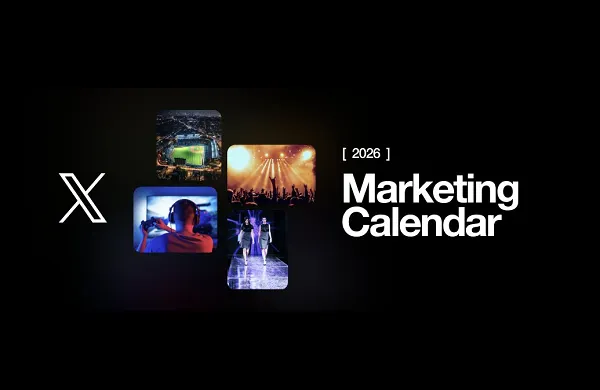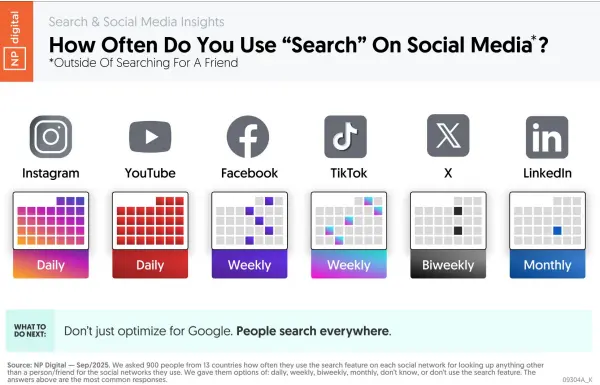New Study Highlights Martech Challenges To Reach Target Audiences via @sejournal, @gregjarboe
Discover the complexities of martech stacks and the struggles of marketing teams to reach target audiences. Learn about the obstacles they face in this survey. The post New Study Highlights Martech Challenges To Reach Target Audiences appeared first on...

A new study conducted by Forrester Consulting on behalf of TransUnion has revealed significant challenges faced by many marketing teams.
These challenges primarily stem from the complexity of their marketing technology (martech) stacks.
The study found that a substantial 70% of marketing leaders struggle to effectively identify and reach their target audiences across various channels.
This difficulty arises from the fragmented nature of their martech systems, often involving a multitude of tools.
Two-thirds of the marketers surveyed reported using 16 or more martech solutions, significantly increasing the complexity of their operations.
This complexity presents several critical obstacles for marketing teams. These challenges include difficulties in personalizing customer journeys, scaling marketing efforts effectively, integrating AI capabilities, and ultimately, wasting valuable marketing budgets.
In a press release, Matt Spiegel, executive vice president and head of TruAudience marketing solutions at TransUnion, said,
“Marketing leaders know what they need to do—they’re just stuck juggling 16 or more martech solutions, creating overwhelming complexity.”
He added,
“It’s not about changing your stack but leveraging identity and data tools to connect these disconnected tools. Without that connection, inefficiencies become significant concerns. We hear from teams every day struggling to bring it all together. But when they do, the difference is massive.”
However, the research also highlights a promising solution: The utilization of identity resolution tools. By integrating their fragmented data sets through these tools, organizations can significantly improve their marketing outcomes.
The study revealed that organizations leveraging identity resolution are more likely to meet or exceed their customer experience and understanding goals, improve customer insights, and make more data-driven decisions.
What Else Can Marketing Leaders Do?
Beyond identity resolution, marketing leaders can employ several strategies to effectively identify and reach their target audiences across various channels.
Data-driven segmentation plays a crucial role. Instead of relying solely on demographics, marketers should utilize a wider range of data points, such as purchase history, website behavior, social media engagement, and interests, to create highly targeted audience segments.
Customer data platforms (CDPs) can be instrumental in this process, as they unify customer data from diverse sources, providing a single, comprehensive view of each individual, which enables more precise segmentation and personalized messaging.
Omnichannel marketing is essential for a seamless customer experience. Marketers should ensure consistent messaging and experiences across all touchpoints, including email, social media, website, mobile apps, and physical stores.
Utilizing cross-channel retargeting, where customers who have interacted with the brand on one channel are reached through targeted ads on other platforms, can significantly enhance reach and engagement.
Search Engine Optimization (SEO) offers strong tactics for marketing leaders to identify and reach their target audiences such as conducting audience research and learning more about the audience that searches for a keyword, uses words in their bio, or visits a website.
Additionally, focusing on high-quality, original content – this content should address the specific needs and interests of the target audience while incorporating relevant keywords naturally. Lastly, prioritizing user experience (UX), not just for Google, but also to satisfy the user.
Content marketing is another powerful tool for marketing leaders to embrace. This requires conducting in-depth audience research and developing buyer personas and gathering direct feedback from their target audience.
Marketers can implement a content pillar strategy that creates in-depth content pieces and cluster supporting content around them. Then distributes and promotes content effectively, whilst leveraging social media, email marketing, and community building.
Social media marketing offers valuable insights and engagement opportunities. Marketing leaders should conduct in-depth audience research with advanced targeting options – go beyond demographics and leverage social listening tools to understand audience needs and preferences.
They should create engaging content combined with paid advertising and develop shareable content, run targeted ads, and collaborate with influencers.
Marketing leaders need to build and engage with online communities and actively participate in conversations, host contests, and run live Q&A sessions. Lastly, leveraging influencer marketing by partnering with influential figures within the target audience can amplify reach and build trust.
Digital Public Relations (PR) ensures promotion online to reach target audiences such as building relationships with relevant media and journalists. This involves identifying and cultivating relationships with key media outlets and journalists who cover topics relevant to their target audience. And, creating compelling and newsworthy stories with stories relevant to the target audience’s interests that offer unique insights or perspectives.
Monitoring online conversations and media mentions allows for understanding brand perception, addressing concerns, and identifying engagement opportunities.
Paid advertising strategies can effectively expand reach, whilst programmatic advertising allows for highly targeted campaigns across various channels.
Finally, leveraging Customer Relationship Management (CRM) systems is crucial. By effectively utilizing the customer data stored within their CRM systems, marketers can gain valuable insights into customer interactions, preferences, and purchase history.
This data can then be used to personalize email campaigns, website experiences, and other marketing messages, fostering stronger customer relationships and driving conversions.
See Your Customers Clearly
The study emphasizes the critical role of identity resolution in streamlining martech operations and achieving better marketing results.
By connecting the dots between their various systems, marketers can gain a clearer understanding of their customers, deliver more personalized experiences, and ultimately, achieve greater success in their marketing endeavors.
Spiegel concluded,
“At the end of the day, it’s about being able to see your customers clearly. When you connect the dots between systems, you’re creating better experiences for people. And that’s what drives results.”
By implementing the strategies above in conjunction with identity resolution, marketing leaders can gain a deeper understanding of their target audiences, deliver more relevant and personalized messages, and ultimately achieve greater success in their marketing campaigns.
About The Survey
Forrester Consulting conducted a survey on behalf of TransUnion in the fourth quarter of 2024 to assess the current state of martech and identity resolution programs within US enterprises. This survey gathered insights from 325 marketing technology decision-makers.
The survey focused on understanding the marketing goals and challenges faced by these decision-makers and was conducted over a two-month period, commencing in November 2024 and concluding in December 2024.
More resources:
10 Strategic SEO Insights & Tactical Advice For 2025 And Beyond SEO in the Martech Stack: How Tech Decisions Can Impact SEO SEO In The Age Of AIFeatured Image: Cagkan Sayin/Shutterstock

 Astrong
Astrong 































